Specify a conceptual model
Table of content
What is a conceptual model?
A conceptual model is a visual representation of the relationships between the variables. The term may refer to models that are formed after a conceptualization or generalization process. Conceptual models are often abstractions of things in the real world. They are not statistical models, but readers can usually translate them into statistical models if they are well designed. In the conceptual model (or theoretical framework), the independent variable (X) is positioned on the left side of the model. In contrast, the dependent variable(s) (Y) is positioned on the model's right side.
Mediation model
A mediation model is an analysis that seeks to identify the mechanism that underlies an observed relationship between an independent variable and a dependent variable via the inclusion of a third explanatory variable, known as a mediator variable. In the mediation model, a mediator variable (M) is presented between the independent variable (X) and the dependent variable (Y). The mediator is usually a quantitative variable.
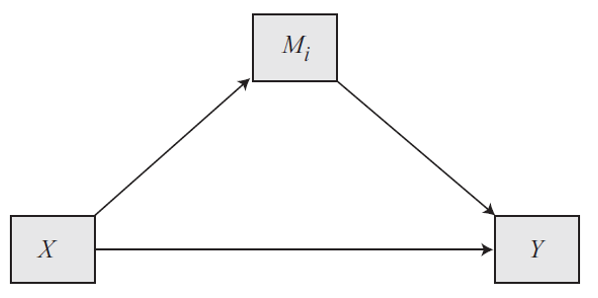
A mediation model can also present several mediator variables. If the mediators are presented in parallel, thus, the independent variable (X) influences the first mediator (M1) and the second mediator (M2). However, the first mediator is not supposed to influence the second mediator. If the mediators are presented in series, thus, the first and the second mediator (M1 and M2) influence the third mediator (M3). Only the third mediator (M3) is supposed to influence the dependent variable (Y).
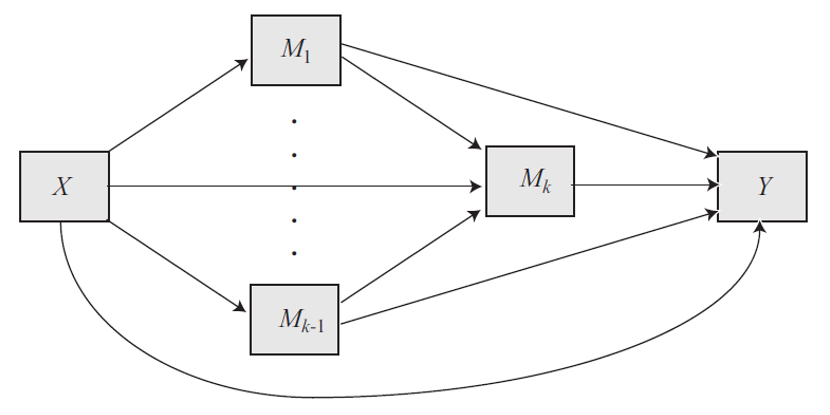
Moderation model
Moderation occurs when the relationship between two variables depends on a third variable. The third variable is referred to as the moderator variable. The model below illustrates how to represent the moderator (W) between the independent variable (Y) and the dependent variable (Y). The moderator can be a quantitative or qualitative variable.
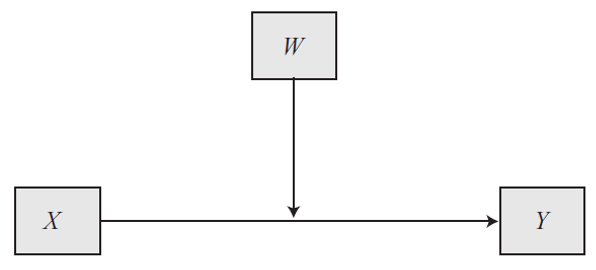
Moderation mediation model
Moderation and mediation can occur together in the same model. Moderated mediation, also known as conditional indirect effects, occurs when the effect of an independent variable (X) on an dependent variable (Y) via a mediator variable (M) differs depending on the moderator variable (W).
In the example below, Pfiffelmann and Soulez (2021) tested if receiving a personalized advertisement mentioning recipients' names (X) on their attitudinal responses (Y) through a perception of self-referencing (M) differs if the advertisement was targeted or not (W).
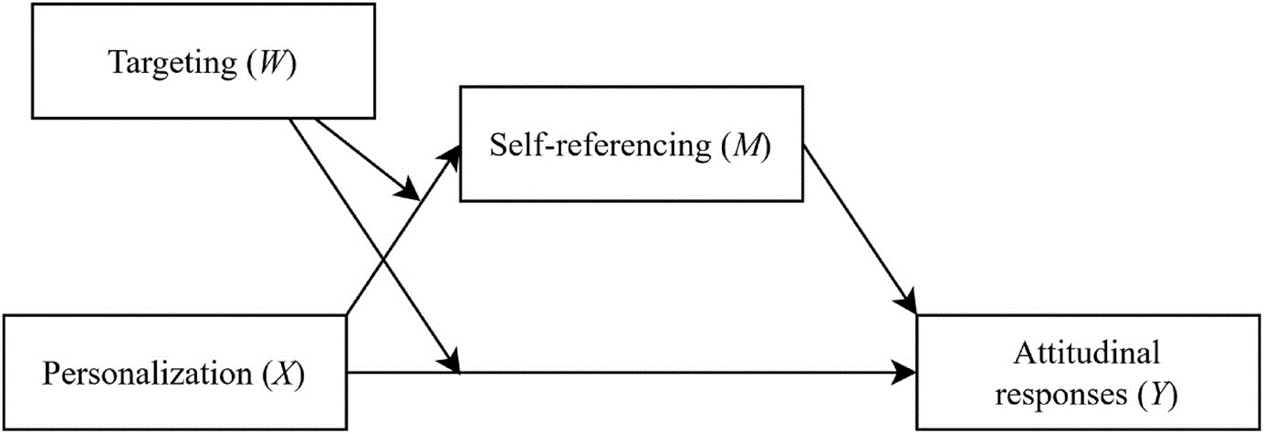
Note: As shown in this example, the variables in the model can specify the notation of the variables (X, M1, M2, Y, and W), but it is not mandatory.
De Keyzer et al. (2015) tested a mediation model while the direct effect is moderated. More specifically, the authors hypothesized that perceived personalization (X) influences consumer response (Y) via perceived relevance (M) and, at the same time, that perceived personalization (X) influences consumer response (Y) differently depending on their level of attitude toward Facebook (W).
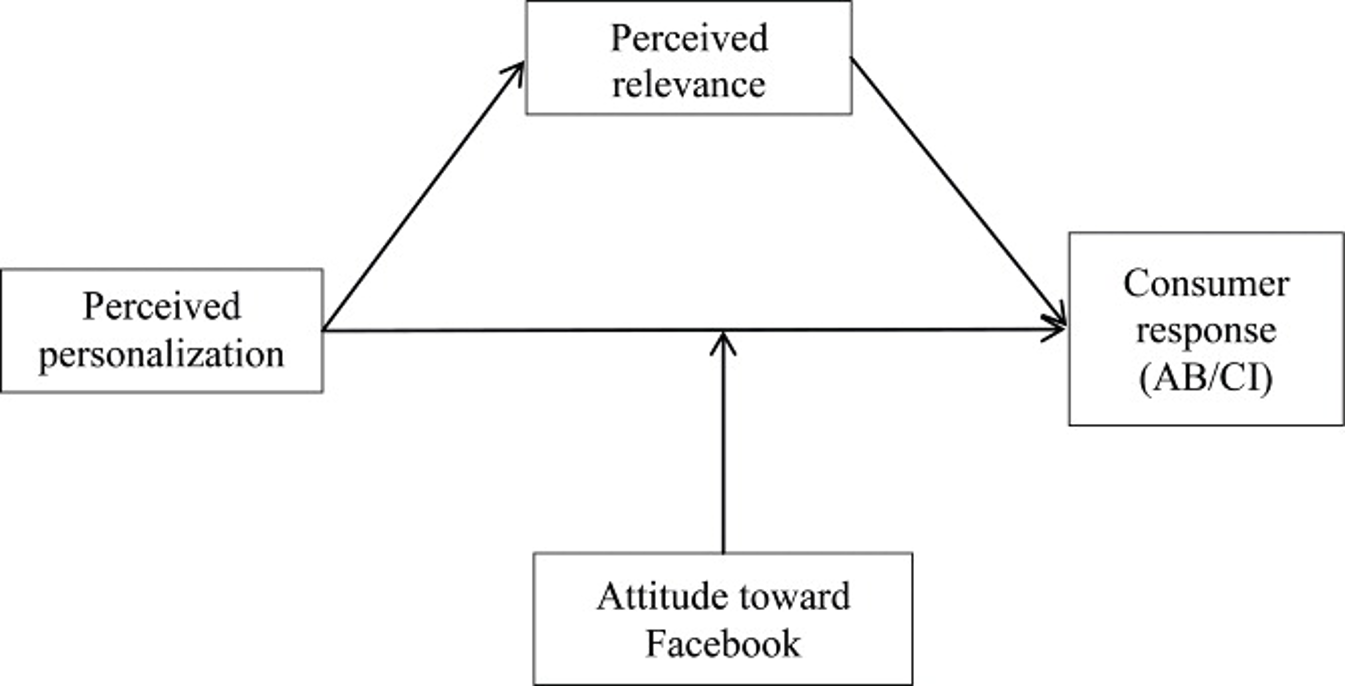
Boerman et al. (2017) developed a model where sponsorship disclosure (X) influences electronic word-of-mouth intention (Y) through conceptual persuasion knowledge (M1) and attitudinal persuasion knowledge (M2) differently depending on the source of ad (a brand or a celebrity) (W).

In this model, De Jans et al. (2020) tested the effect of source sponsored post (X) on two different independent variables: brand awareness (Y1) and brand liking (Y2), through sources admiration (M1) and source credibility (M2). However, source admiration and source credibility are not supposed to influence each other because they are positioned in parallel. In addition, only the effect of source sponsored post (X) is supposed to influence source credibility (M2) differently depending on advertising recognition (W).
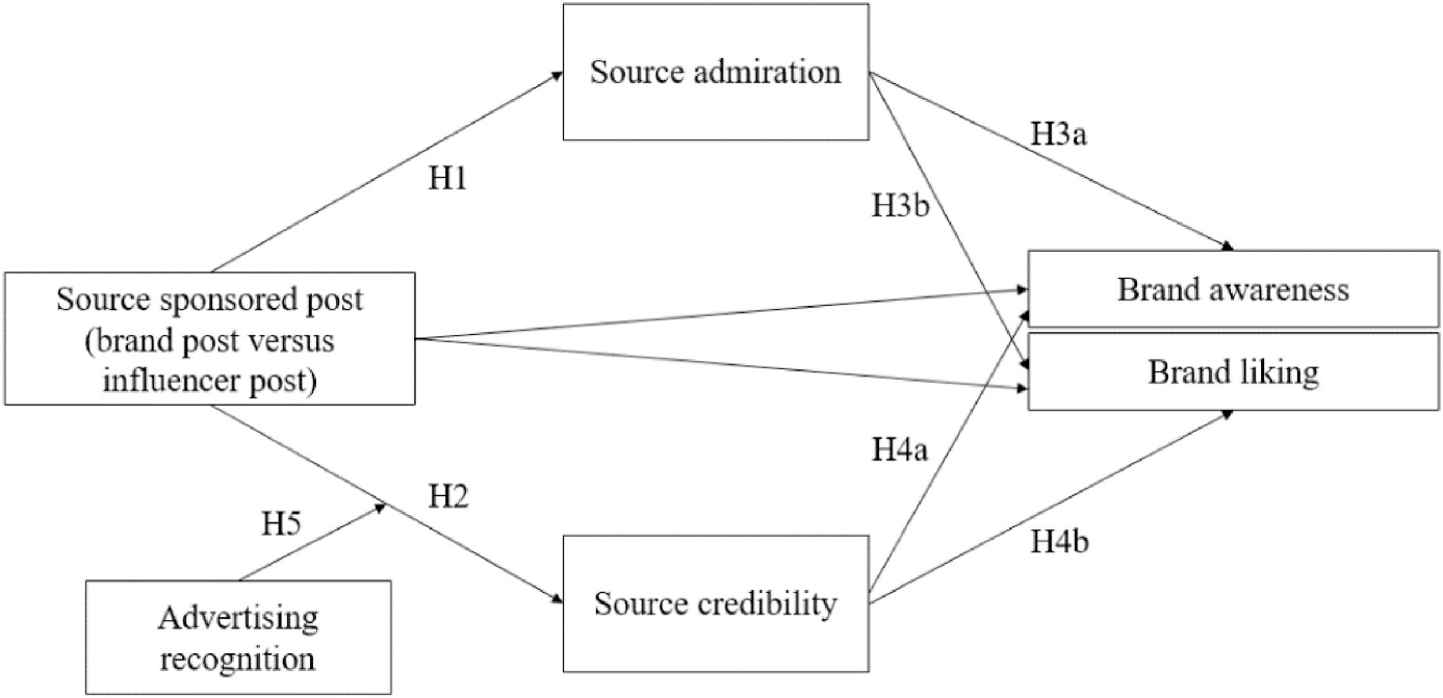
Note: It is also recommended to include the hypotheses notation (H1, H2, H3a, H3b, H4a, H4b, etc...) in the model.